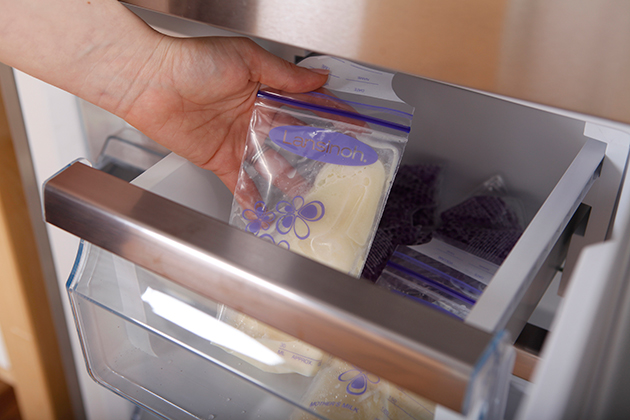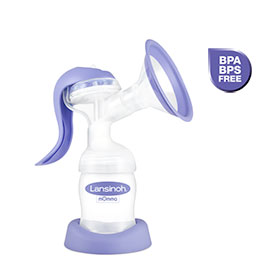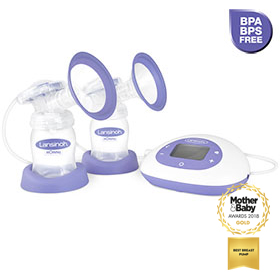Advice Articles
- Home
- Advice Articles
- Breastfeeding
- Feeding Tips for Care-Givers
Feeding Tips for Care-Givers
The relationship between yourself and your baby is one which allows both of you to be responsive to each other. Your baby shows you that he/she is getting ready for a feed and your breasts alert you that they are ready to feed baby. Care-givers don’t have this relationship with your baby so you could help them to understand when your baby needs a feed and how to keep it as close to a breastfeed as possible.
The person looking after your baby may need some help on how to feed your baby and it would be useful for you to explain about your baby’s feeding cues – which ones does your baby uses first or most often, but also make sure they know all the cues – just in case your baby surprises them!
You will want to ensure that your provider understands how to handle your breastmilk including how to thaw it and to ensure that since thawed breastmilk cannot be re-frozen your provider only uses smaller increments so as not to waste any unused breastmilk. Lansinoh Breastmilk Storage Bags thaw quickly in a glass bowl of warm water and should be transferred into a bottle – microwaving kills the goodness in your breast milk and causes hot spots. Once bottled the breastmilk should be gently swirled to mix the watery layer with the creamy layer. Shaking vigorously will harm the milk
Here are some other tips that can help your caregiver:
- Your baby doesn’t need any additional fluids such as water or juice
- Adding solids to milk can cause a choking hazard and will not help your baby to sleep longer
- Ask your caregiver to use their inner wrist to ensure the milk is warm or room temperature before giving to baby
- Thawed breastmilk should never be refrozen. Ideally defrost small amounts so there is no waste and remember Lansinoh Breastmilk storage bags defrost quickly
- If your baby doesn’t finish a bottle and there is milk left, your care giver should know that the leftover milk needs to be used within the hour of starting the bottle. Leftover milk should be thrown away once the hour has passed.
“Paced feeding” is a technique that allows baby to take in as much as she wants and allows baby to set the pace when bottle-feeding. The caregiver invites the baby to draw the nipple by softly moving the teat on baby’s lips. As baby opens her/his mouth and pokes their tongue out, caregiver will place the teat further in but they should allow your baby to draw the teat fully into their mouth. Caregiver should pace the feed to ensure baby is not forced to feed more than she wants, and will allow the caregiver to recognize baby’s cues when they have had enough. This can reduce the risk of overfeeding and symptoms associated with colic like stomach upset, gassiness, and fussiness.
You might also want to discuss the importance of skin to skin contact with your care-giver as a way of calming your baby. By being skin to skin, your baby will feel more secure when apart from you. Also with baby in this upright position your baby will be ready to feed.
If your care-giver is uncomfortable with putting baby skin to skin they could try having as little clothing between the 2 of them and cuddling your baby closely.
Holding baby in this way helps the care-giver and baby to look into each other’s eyes and your baby will respond to the caregiver gently talking.
Your baby will know when they have had enough to eat and should not be forced to have the whole bottle and any leftover milk should be discarded. Let your caregiver practice feeding your baby knowing that you are close at hand. That way you’ll both be more relaxed and baby won’t sense any tension and become upset.
You’ve made the decision to have some ‘me’ time and you have done all you can to help your baby and caregiver to form a feeding relationship that will be satisfying to both of them. You will still worry, especially the first time you leave them together (and likely every other time!) but hopefully you’ll be reassured when you return that baby and caregiver have done just fine with the helpful hints and tips you gave.
Related Categories
Related Articles
-

Back To Work Checklist
Start pumping and freezing your milk, in date labelled containers, about a month before...
Read More -

Breast Pumping Tips
Here are a few more tips to help you pump successfully: 1) One of the most...
Read More -

Storing Expressed Breastmilk
Safe temperature storage guidelines The following are guidelines from La Leche League International on how...
Read More -

Feeding Expressed Breastmilk
It’s important to know that exclusive breastfeeding is recommended for the first 6 months...
Read More
You May Also Need
-
... View -

Manual Breast Pump
Lansinoh’s Manual Breast Pump provides a portable and convenient option for breastfeeding women who... View -

Feeding Bottle with NaturalWave® Teat
In order to achieve your breastfeeding goals, you may choose to express your precious breast milk and... View -

2 in 1 Double Electric Breast Pump
Lansinoh’s 2-in-1 Electric Breast Pump is the very best option for mothers who want comfort, flexibility... View
